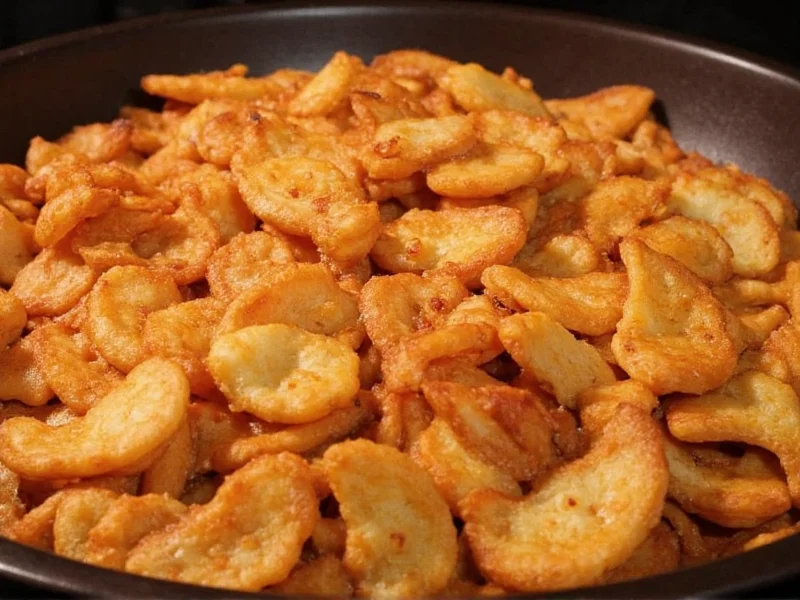Unlike liquid hot sauces, chilli crisp stands out for its signature crunchy texture from fried aromatics and chili flakes. This versatile condiment has gained global popularity beyond its Chinese roots, becoming a pantry staple for food enthusiasts seeking to elevate everyday meals with minimal effort.
History and Cultural Origins
Chilli crisp traces its origins to Sichuan province in southwestern China, where bold flavors and numbing-spicy profiles define the regional cuisine. Traditional versions were homemade preparations where cooks would slowly fry dried chilies, garlic, and aromatics in oil until crisp, then store the mixture for weeks or months. The preserved oil absorbed complex flavors while the solids provided texture.
The commercial version that sparked global interest emerged in the early 2010s when chef David Chang's Momofuku brand introduced its take on the condiment. However, the authentic Chinese version known as lazi you (literally "chili oil") has been a household staple for generations, particularly in Sichuan cooking where it's used as both a cooking ingredient and finishing sauce.
Key Ingredients That Define Authentic Chilli Crisp
While recipes vary by region and producer, authentic chilli crisp contains these essential components:
| Ingredient Category | Common Examples | Flavor Contribution |
|---|---|---|
| Chili Peppers | Arbol, Tien Tien, Jalapeño (dried) | Heat foundation with varying spice levels and fruitiness |
| Aromatics | Garlic, shallots, ginger | Savory depth and caramelized crunch |
| Spices | Sichuan peppercorns, star anise, cinnamon | Complexity and signature mouth-tingling sensation |
| Umami Boosters | Fermented black beans, shrimp, mushrooms | Rich savory notes that balance heat |
| Oil Base | Sesame oil, vegetable oil, chili oil | Flavor carrier that preserves ingredients |
How Chilli Crisp Differs From Other Hot Sauces
Understanding what is chilli crisp requires distinguishing it from similar condiments. While chilli oil focuses primarily on infused oil with minimal solids, chilli crisp intentionally retains substantial crunchy bits. Compared to sriracha, which is smooth and vinegar-forward, chilli crisp offers textural contrast and more complex spice profiles without significant acidity.
The difference between chilli crisp and chili garlic sauce lies in preparation method and texture. Chili garlic sauce typically blends ingredients into a paste, while chilli crisp maintains distinct crunchy elements through careful frying. This textural component is essential to what makes chilli crisp unique among spicy condiments.
Popular Variations Across Regions
Regional interpretations of chilli crisp showcase diverse flavor profiles:
- Sichuan style: Features prominent Sichuan peppercorns creating the characteristic ma la (numbing-spicy) sensation
- Hunan style: Uses fresh chilies for brighter heat with less complexity
- Yunnan style: Incorporates wild mushrooms and more floral spices
- Overseas adaptations: Western versions often reduce heat levels while emphasizing garlic notes
Commercial brands like Lao Gan Ma, Fly By Jing, and Momofuku Chili Crunch have introduced standardized versions that maintain consistency while adapting to global palates. When exploring what is chilli crisp in different contexts, these variations demonstrate how the basic concept adapts to local preferences while maintaining core characteristics.
Practical Uses in Everyday Cooking
Learning how to use chilli crisp effectively transforms ordinary meals. Unlike many spicy condiments used only as finishing touches, chilli crisp works at multiple cooking stages:
- Stir-fries: Add 1-2 tablespoons during final minutes of cooking for instant depth
- Noodle dishes: Mix directly into cold or hot noodles for instant flavor boost
- Marinades: Combine with soy sauce and rice vinegar for meats or tofu
- Breakfast applications: Swirl into congee or scrambled eggs
- Dipping sauces: Blend with mayonnaise or yogurt for creamy spicy dip
- Finishing touch: Sprinkle over pizza, avocado toast, or roasted vegetables
When considering chilli crisp ingredients and their applications, the condiment's versatility stems from its balanced flavor profile that enhances rather than overwhelms other ingredients. The oil component carries flavors effectively while the crunchy bits provide textural interest that smooth sauces cannot replicate.
Storage Guidelines and Shelf Life
Proper storage maintains chilli crisp quality and safety. Commercial versions typically remain shelf-stable for 12-18 months unopened. Once opened, refrigeration extends freshness to 6-8 months. Homemade versions require refrigeration and last 3-4 weeks.
The oil may solidify slightly when refrigerated - this is normal. Simply bring to room temperature and stir before use. Always use clean, dry utensils to prevent contamination. Signs of spoilage include mold growth, unpleasant odors, or significant separation that doesn't reincorporate with stirring.
Understanding Heat Levels and Flavor Balance
Is chilli crisp spicy? The answer depends on the specific brand and recipe. Authentic versions prioritize flavor complexity over extreme heat. Most commercial chilli crisps register between 2,000-8,000 Scoville units - comparable to a jalapeño pepper but distributed throughout oil and solids rather than concentrated in seeds.
The magic of chilli crisp lies in its layered flavor development. High-quality versions showcase multiple stages of taste perception: initial aromatic notes, followed by moderate heat, then lingering umami. This progression makes it more versatile than single-note hot sauces. When evaluating what is chilli crisp supposed to taste like, look for this complexity rather than just spiciness.











 浙公网安备
33010002000092号
浙公网安备
33010002000092号 浙B2-20120091-4
浙B2-20120091-4